Enjoy the trail Motril, Salobreña and Almuñécar
The Mediterranean coastal walk route links the towns of Motril, Salobreña and Almuñécar and runs parallel to the coastline.
There are sections of the walk which pass through the old cattle path, “Colada de la Costa a la Sierra” that connected the coastal area with the neighbouring Sierras and which led cattle- herds to mountain pastures. This is a steep section of the coastline with ravines and watercourses that plunge to sea-level and the entire route is dotted with watchtowers.
The first stage
Motril Salobreña
Approximately 1,5 hour
Coastal walking route. We start at Playa Granada in Motril. We move along the beach towards Salobreña. A very pleasant coastal walk awaits us. The beach and the surrounding area looks quite wild, with no tourist infrastructure or anything else. The wilderness is interesting.
After about an hour’s walk you will find yourself near a concrete breakwater. Turn onto the path and follow the road straight ahead. We reach the flyover. You have to climb it, following the road on the right. The designer of this structure must have hated pedestrians. We walk along the viaduct parallel to the sea. Go down at its end and turn left onto the first path you encounter. After a while, we reach the seaside promenade in Salobreña. We finish the route at the Rock (El Peñon), after about 15 minutes of walking.
Download guide (PDF) DOWNLOAD
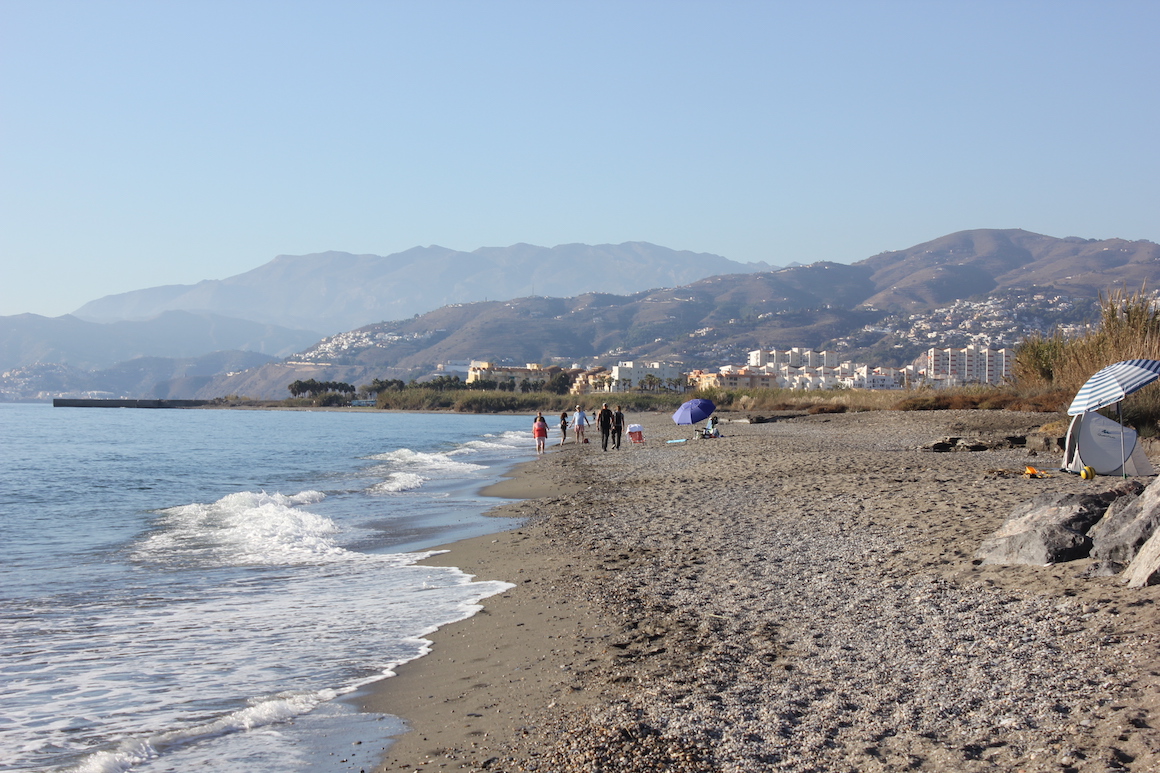
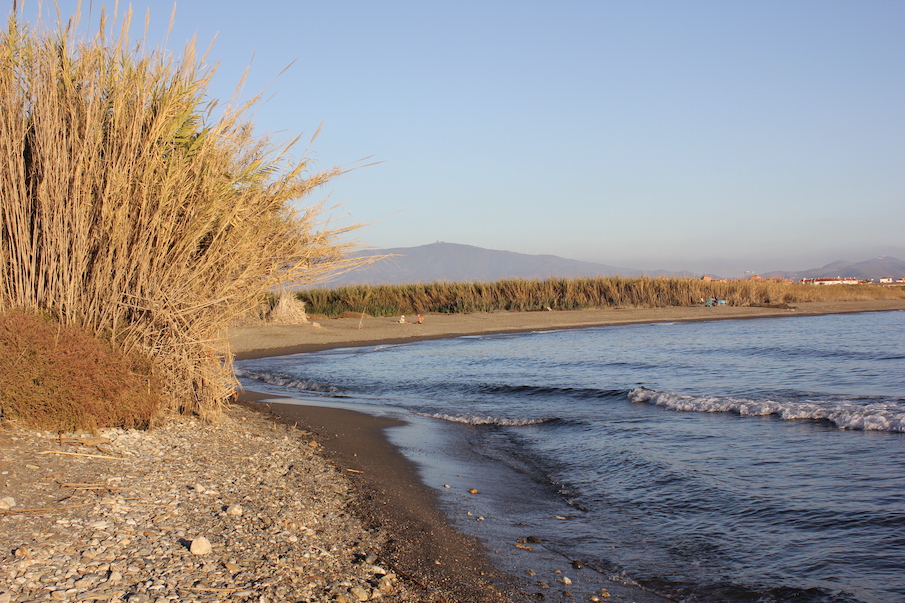
The second stage
Salobreña Almuñécar (hotel Salobreña)

A fairly easy route, but requires at least some physical fitness. On the trail, we will enjoy the magnificent views. We will also see historic watchtowers.
The starting point is the Rock (El Peñon) on the beach. After about 15 minutes of walking we reach La Caleta. It is a small picturesque village perched on a hill. The area around La Caleta is quite sweet, it was built around the Guadalfeo Sugar Mill that opened in 1861. The Guadalfeo Factory still stands today in the La Caleta area. It has been given a cultural designation by the Spanish government and is protected due to the interest in its old machinery. It is currently closed to the public. Sugar production on the Costa Tropical was started by the Moors. Because of the warm tropical climate and access to water, this area was perfect for sugar cane cultivation. Until more recently, sugar cane production was a very important part of the local economy, as it had been for over the last 1000 years.
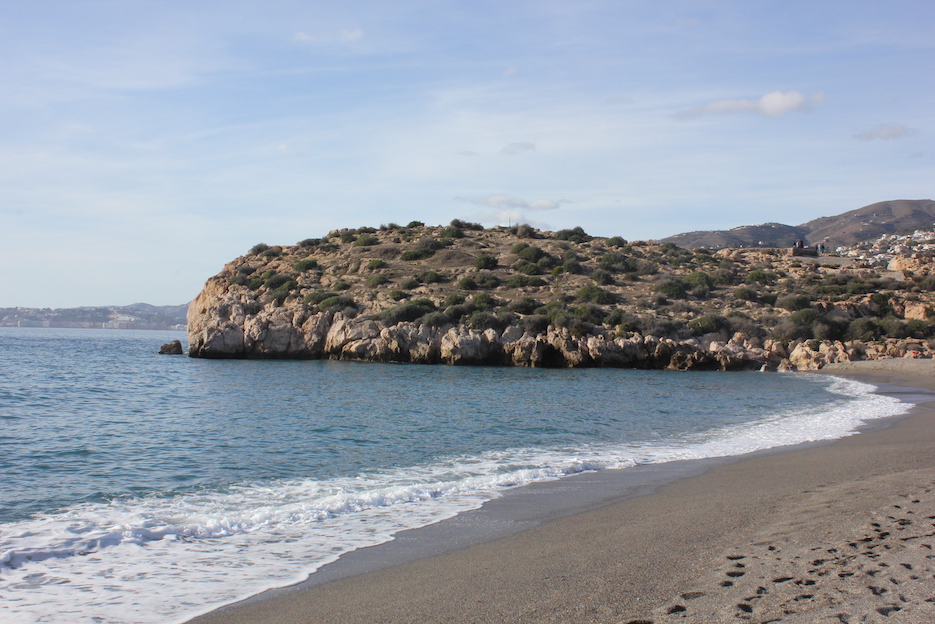
El Peñon
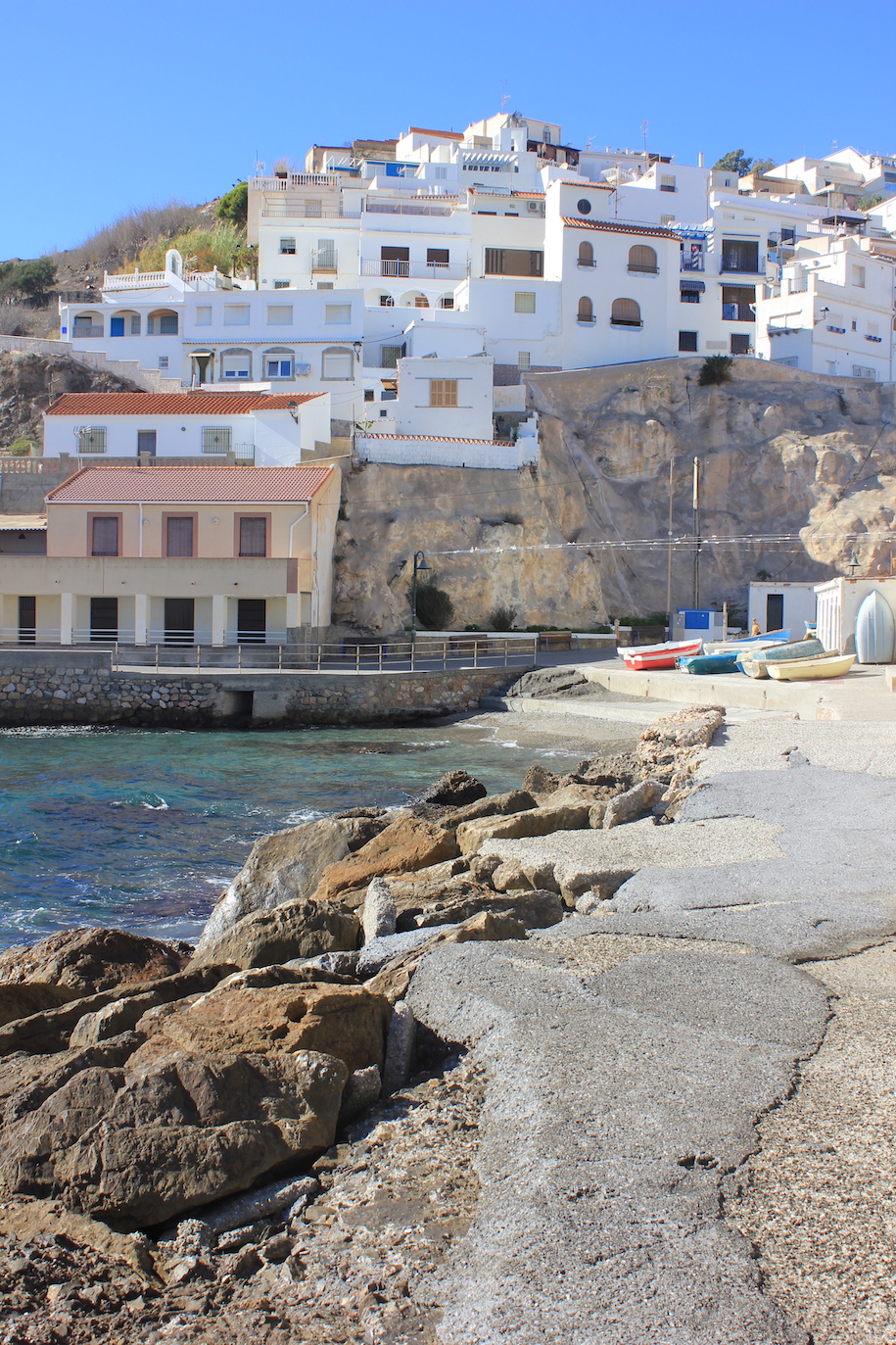
La Caleta

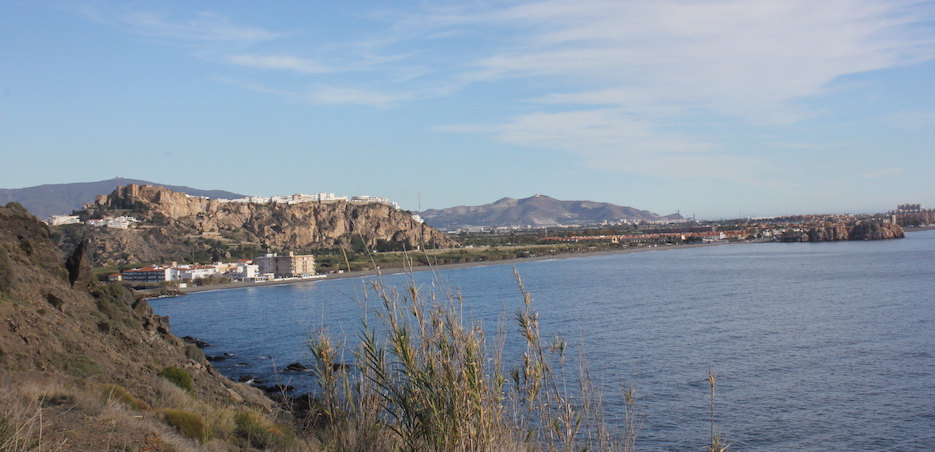
It is worth stopping by La Caleta for a while. After seeing the village, we return to the beach. We move on from the small seafront promenade. Here begins an extremely charming stone path along the sea with distinctive black rocks. You have to be careful. If conditions are inconvenient or we are walking with children or a dog, we can take an alternative route. From La Caleta we walk towards the road, but we do not come to the road itself, but turn into a dirt track that used to be used to drive cattle. On the premises of the Salobrena hotel there is a watchtower. (Access is via the interior of the hotel). It is a tall, narrow, cylindrical tower consisting of two storeys and a platform. Its construction is of solid, base with a conical shaped finishing, two metres high. The door is located in the lower chamber at a considerable height from ground level and faces north. These watchtowers were built to guard the coastline, in search of enemy ships and warn the people of a potential attack by sending out fire or smoke signals. This particular watchtower is an example of a Nasrid building (13th to 15th centuries).
Download guide (PDF) DOWNLOAD
Now we have to make a decision. We return to Salobreña by the same route or continue to Almuñecar. From Almuñecar we can return by bus (Alsa) or by taxi. Note: If we are accompanied by a dog we are unlikely to return by public transport (a pet up to 10 kg can go in the…. luggage compartment), or by taxi.
Costa Tropical fruit route
Start point: Salobreña bus station. The walk takes about 3 hours round trip.
Costa Tropical is a benchmark in Europe for subtropical crops. The region’s climate is one of a kind in Europe and was found to be perfect for growing these fruits: mango, chirimoya, custard apple, avocado and loquats; and other more exotic ones, such as guavas, lychees, dragon fruit, star fruit and kumquat. The unique climate of the Costa Tropical is a result of the direct contact of the land with the Mediterranean Sea, and the fact that it is protected by the mountains of Sierra Nevada and Lújar from the north winds and from the influence of the winds that come from the northernmost part of Africa. This creates a subtropical microclimate with more than 300 days of sunshine a year and an average yearly temperature of 20 degrees Celsius.
Enjoy a walking tour from Salobreña to the town of Lobres, along the trail of tropical fruit plantations.
Download guide (PDF) DOWNLOAD
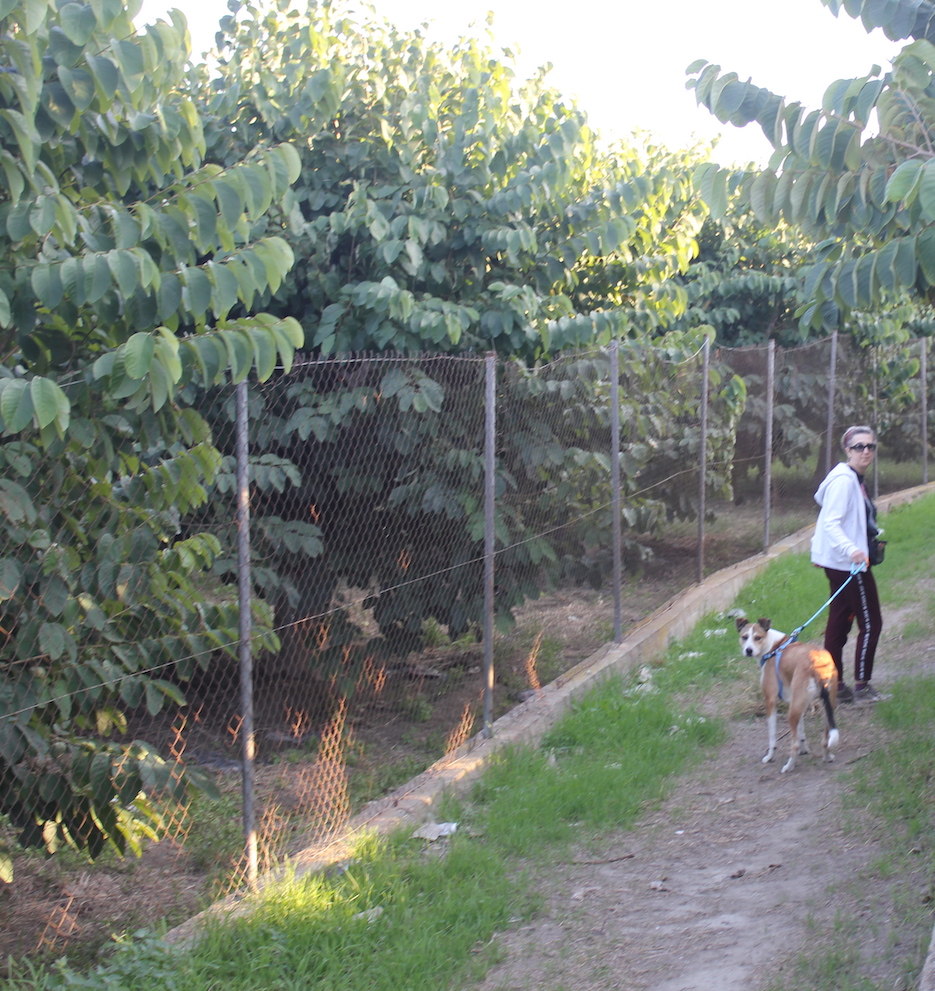


Cherimoya
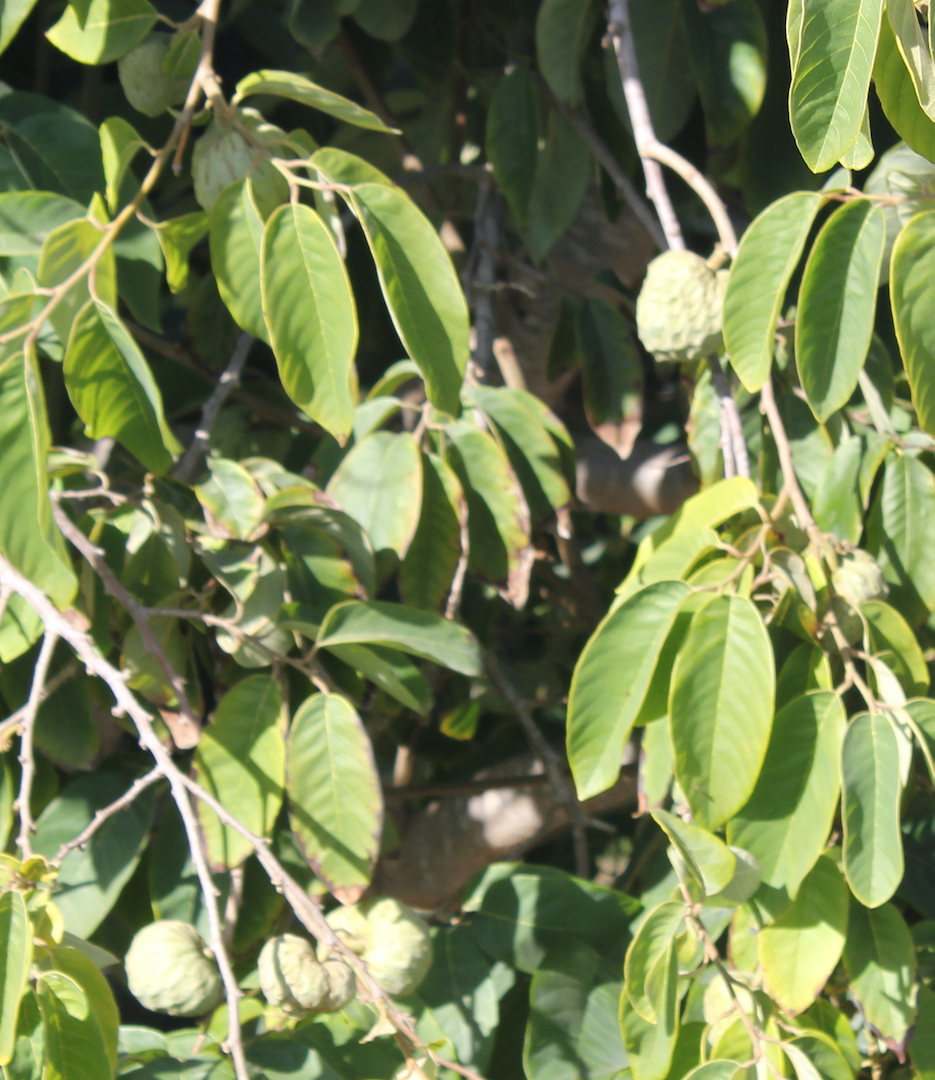
RECOMMENDED
Salobreña guided Free Tours in Spanish and English. Invite you to a wonderful walk through the ancient Moorish castle of Salobreña and its old town where centuries ago the kings of the Alhambra themselves walked.
More information: